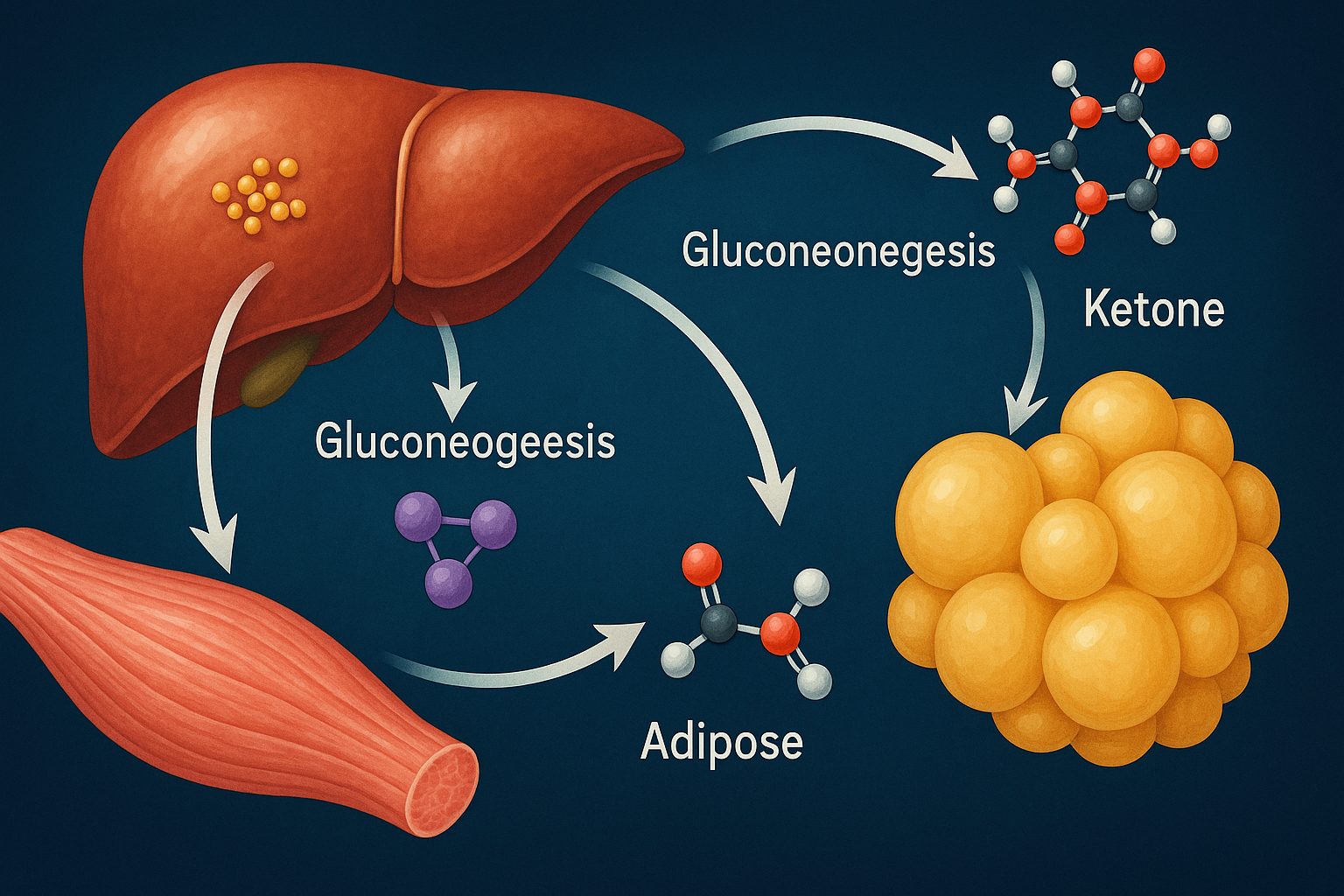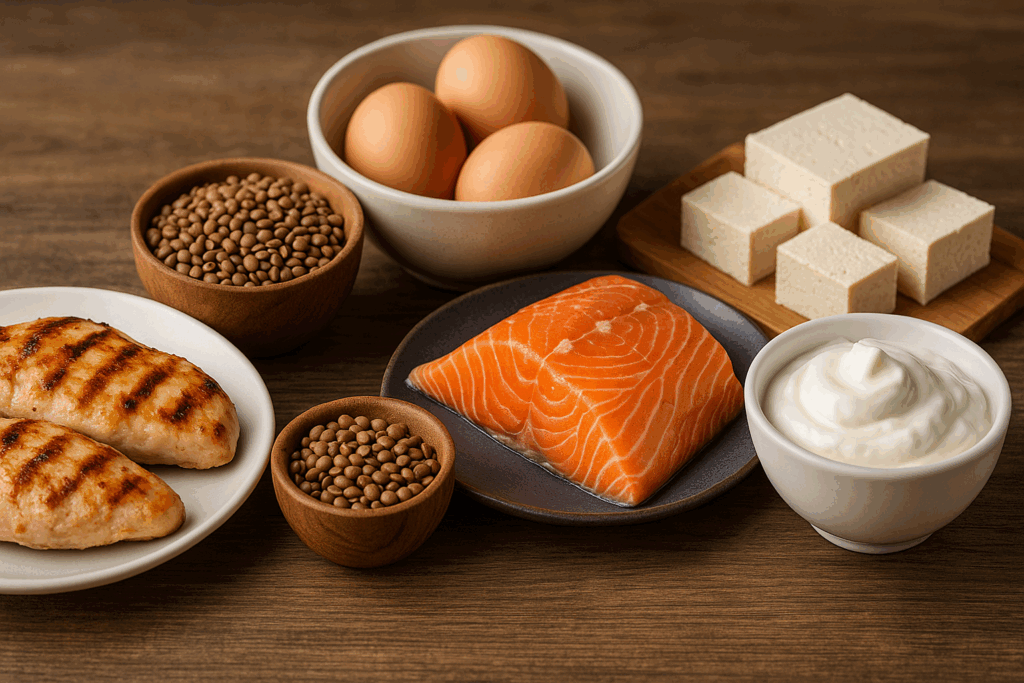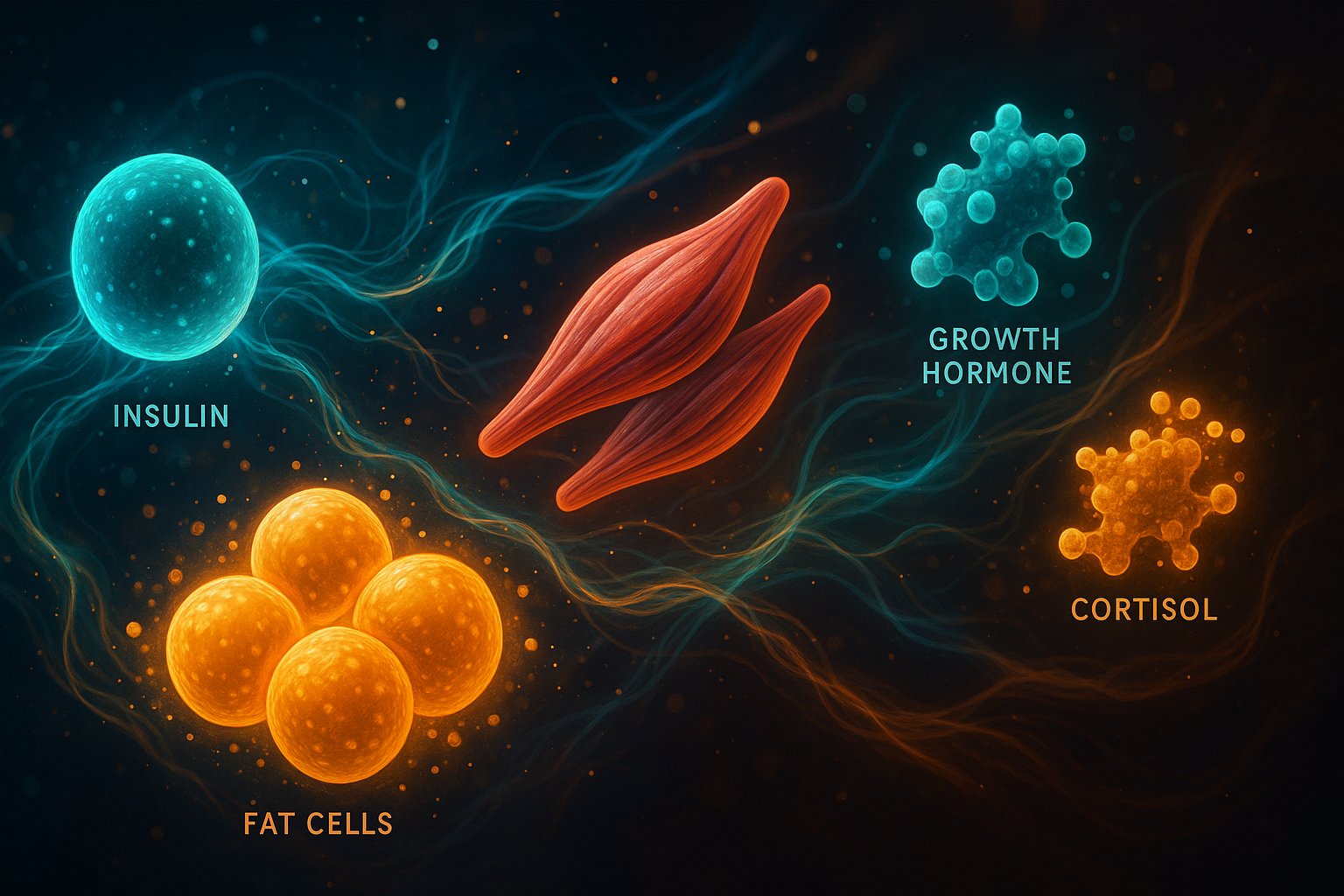In the ongoing quest for better health, leaner physiques, and improved metabolic resilience, fasting has emerged as a powerful and ancient strategy. Rooted in religious traditions and now revitalized through modern science, fasting promises a range of benefits from enhanced cellular repair to fat loss. Yet, amid all the hype lies a critical question: does fasting burn fat or muscle? The answer has profound implications for health-conscious individuals, athletes, and anyone practicing high-protein or intermittent fasting diets.
You may also like : The Ultimate Guide to Choosing a High Protein Diet Name That Fits Your Goals
Understanding whether fasting preferentially targets fat or muscle tissue is essential for crafting sustainable nutritional strategies. This question is not only relevant to body composition and aesthetics but also to longevity, metabolic health, and overall physiological function. As we explore this complex topic, we will uncover the science behind fasting-induced weight loss, the interplay between fasting and muscle preservation, and the powerful role high-protein diets play in optimizing outcomes.

The Physiology of Fasting: What Happens in the Body
When you enter a fasting state, your body undergoes a series of metabolic transitions designed to preserve life in the absence of food. Initially, glucose from your last meal is used for energy. Once this is depleted, your liver begins to convert glycogen into glucose through glycogenolysis, supplying the bloodstream with fuel. This stage typically lasts 12 to 24 hours depending on activity level and glycogen reserves.
As glycogen stores dwindle, the body shifts into a state called gluconeogenesis, where it manufactures glucose from non-carbohydrate substrates such as lactate, glycerol, and amino acids. This is the point where concerns about muscle loss arise: amino acids for gluconeogenesis are derived partly from muscle tissue. However, this process is tightly regulated. Concurrently, ketogenesis ramps up as the liver begins converting fatty acids into ketone bodies, which serve as an alternative fuel for the brain and muscles.
Over time, the body becomes more efficient at utilizing fat and ketones for energy, thus sparing muscle tissue. In fact, contrary to early assumptions, the human body has evolved to prioritize fat metabolism over muscle breakdown during prolonged fasting, especially in individuals with adequate fat stores. Hormonal adaptations—such as increased growth hormone secretion and decreased insulin levels—support this muscle-preserving shift.

Does Fasting Burn Fat or Muscle? Decoding the Biological Priorities
One of the biggest myths about fasting is that it causes rapid muscle loss. To address the question directly—does fasting burn fat or muscle?—we must look at the biological hierarchy of energy use. The body is not indiscriminate in its energy sourcing. Fat, stored in the form of triglycerides within adipose tissue, represents a dense and readily available energy reserve. Muscle, while also an energy source, is functionally more valuable and thus less expendable.
In early fasting stages, minor muscle protein breakdown occurs, primarily to supply amino acids for gluconeogenesis. However, this process is temporary and significantly reduced after the body transitions to fat and ketone utilization. Studies show that with intermittent fasting protocols such as time-restricted eating or alternate-day fasting, the net loss of lean muscle mass is minimal, especially when protein intake is adequate and resistance training is maintained.
Moreover, the evolutionary logic is compelling. In ancestral environments where fasting was common due to food scarcity, losing muscle quickly would have impaired survival by reducing strength and mobility. Instead, the body adapted to preserve muscle and utilize fat stores, which are more efficient and less functionally critical.

High-Protein Diets: The Muscle-Sparing Ally During Fasting
A pivotal factor in protecting muscle during fasting is dietary protein. High-protein diets have been shown to significantly enhance muscle retention during caloric restriction and fasting protocols. This is due in part to the anabolic effects of amino acids, which stimulate muscle protein synthesis and counteract breakdown.
When combined with intermittent fasting, high-protein intake creates a metabolic environment that promotes fat oxidation while preserving lean tissue. For example, consuming 1.6 to 2.2 grams of protein per kilogram of body weight during a fasting-feeding window can support muscle maintenance or even growth. Furthermore, proteins such as whey, casein, and soy provide complete amino acid profiles essential for tissue repair and growth.
In addition to preserving muscle, high-protein diets improve satiety, stabilize blood sugar levels, and support thermogenesis, all of which contribute to healthier body composition. For individuals aiming to maximize the benefits of fasting without compromising muscle mass, integrating high-protein meals during refeeding periods is essential.

Does Fasting Burn Fat or Muscle? The Role of Exercise and Resistance Training
Another critical determinant in the fat vs. muscle debate is physical activity. Specifically, resistance training has a powerful muscle-preserving effect during fasting. Engaging in regular strength workouts signals the body to prioritize muscle retention by enhancing neuromuscular engagement and stimulating growth hormone secretion.
During fasting periods, resistance exercise promotes a favorable hormonal milieu, increasing anabolic factors such as testosterone and IGF-1. These hormones play a central role in muscle repair and growth. Simultaneously, exercise increases mitochondrial efficiency, improving the body’s capacity to oxidize fat for energy.
In practical terms, individuals following intermittent fasting protocols who also engage in weight training are significantly more likely to maintain or increase muscle mass while reducing body fat. This synergy underscores the importance of a holistic approach that combines nutrition, timing, and activity.
Intermittent Fasting Muscle Loss: Myth or Reality?
Concerns about intermittent fasting muscle loss are not unfounded, especially among athletes and older adults. Sarcopenia—the age-related loss of muscle mass—can be exacerbated by caloric restriction if not managed correctly. However, emerging evidence suggests that, when implemented with precision, intermittent fasting does not inherently cause muscle wasting.
A systematic review published in the Journal of Translational Medicine analyzed multiple trials involving intermittent fasting and found that lean body mass was largely preserved, particularly when protein intake was sufficient. Moreover, when intermittent fasting was paired with strength training, participants experienced fat loss without significant muscle decline.
The context matters greatly. Individuals who consume adequate protein, engage in resistance exercise, and avoid overly long or aggressive fasts tend to retain muscle effectively. Conversely, prolonged fasting beyond 72 hours without nutritional support can lead to some muscle catabolism, though this is still modest in healthy individuals with stored fat reserves.
Does Fasting Burn Fat or Muscle? The Importance of Fast Duration and Frequency
The duration and frequency of fasting significantly influence whether the body prioritizes fat or muscle for energy. Short-term fasts—ranging from 12 to 24 hours—are generally associated with minimal muscle loss. These fasts primarily tap into glycogen and fat stores, while muscle remains intact.
Longer fasts, particularly those exceeding 48 to 72 hours, begin to challenge the body’s capacity to spare muscle. Although ketones become the dominant energy source during these extended fasts, gluconeogenesis still draws on amino acids to a degree. Therefore, prolonged fasting without intermittent refeeding or protein supplementation increases the risk of muscle protein breakdown.
Frequency also plays a role. Daily time-restricted feeding, such as eating within an 8-hour window, appears to optimize metabolic benefits without compromising muscle. Alternating between fasting and feasting days (as seen in alternate-day fasting) can also preserve lean mass if refeeding includes adequate calories and protein.
Thus, the safest and most effective fasting strategies are those that balance energy restriction with adequate nutritional support. Individuals must personalize their fasting routines based on activity level, age, metabolic health, and muscle maintenance goals.

The Hormonal Landscape of Fasting: Fat Burning vs. Muscle Catabolism
Hormonal changes during fasting help mediate the balance between fat burning and muscle catabolism. Among the key hormones are insulin, glucagon, growth hormone, and cortisol.
Insulin levels drop significantly during fasting, enabling the mobilization of stored fat. Glucagon, on the other hand, rises and signals the liver to release glucose and initiate ketone production. This hormonal shift supports lipolysis and discourages muscle breakdown.
Growth hormone (GH), often called the “anti-aging hormone,” increases substantially during fasting. GH promotes lipolysis and muscle protein synthesis while counteracting catabolic pathways. This effect is particularly pronounced during overnight fasts and prolonged caloric deficits.
Cortisol, a stress hormone, also rises during fasting. While excessive cortisol can contribute to muscle breakdown, its short-term elevation during fasting is balanced by increases in GH and ketones, both of which protect muscle. Importantly, regular resistance training and adequate sleep help modulate cortisol levels.
Together, these hormonal shifts facilitate a metabolic environment that favors fat oxidation while conserving muscle tissue—especially when supported by strategic dietary choices and exercise.
High-Protein Diets and Ketosis: A Powerful Combination for Body Composition
For those seeking to maximize fat loss while maintaining muscle, a high-protein, ketogenic-inspired approach offers a compelling solution. Ketogenic diets, characterized by low carbohydrates and high fat intake, promote a deep state of fat metabolism and ketone production. When protein intake is kept moderate to high, the risk of muscle loss is further minimized.
In this metabolic state, the body uses ketones as the primary fuel, which reduces the need for glucose and subsequently diminishes amino acid breakdown. Moreover, high-protein ketogenic diets are particularly effective in promoting satiety and preserving lean mass, making them ideal companions to fasting protocols.
Studies in obese individuals and trained athletes confirm that ketogenic diets combined with intermittent fasting result in significant fat loss without compromising muscle. However, it is essential to monitor overall nutrient intake to avoid deficiencies, particularly in electrolytes, fiber, and micronutrients.

Real-World Application: How to Fast for Fat Loss Without Losing Muscle
Integrating fasting into a muscle-conscious lifestyle requires planning, discipline, and customization. For beginners, starting with a 12:12 fast (12 hours fasting, 12 hours eating) can ease the transition. As metabolic flexibility improves, extending to a 16:8 window (16 hours fasting, 8 hours feeding) provides more pronounced fat-burning effects.
During the eating window, prioritize high-quality protein sources such as eggs, poultry, fish, legumes, and dairy. Combine these with healthy fats, fibrous vegetables, and complex carbohydrates as needed to support activity and recovery. Supplements such as branched-chain amino acids (BCAAs) or essential amino acids (EAAs) may further protect muscle during fasted workouts.
Avoid exercising in a severely depleted state, especially for high-intensity resistance training. Instead, schedule workouts close to your feeding window to optimize performance and recovery. Hydration, sleep, and stress management are equally vital in preserving lean mass while fasting.
Monitoring progress through body composition scans, strength metrics, and energy levels provides feedback for refining your fasting and diet regimen. Everyone’s physiology is unique, so listen to your body and adjust as needed.
Intermittent Fasting Muscle Loss in Older Adults: What to Consider
Older adults face unique challenges when practicing intermittent fasting. Sarcopenia accelerates with age, making muscle preservation a top priority. Although fasting can offer benefits such as improved insulin sensitivity and autophagy, it must be approached with caution in this population.
Research suggests that older adults can safely engage in intermittent fasting if their protein intake is sufficiently high and evenly distributed across meals. Timing matters: consuming protein shortly after resistance exercise enhances muscle protein synthesis. Additionally, combining intermittent fasting with creatine supplementation, resistance training, and omega-3 fatty acids may help combat age-related muscle loss.
Medical supervision is recommended for older individuals, especially those with chronic conditions or on medication. Ensuring nutrient density and caloric adequacy during feeding windows is paramount. When done thoughtfully, intermittent fasting can support both metabolic and musculoskeletal health in aging populations.
Does Fasting Burn Fat or Muscle? How Body Type and Gender Affect the Outcome
Individual differences such as body type, gender, and hormonal profile influence how fasting impacts fat versus muscle. Ectomorphs—naturally lean individuals with a fast metabolism—may be more prone to muscle loss if fasting is not paired with high-protein intake. Endomorphs, who tend to carry more fat, may benefit more readily from fasting-induced fat loss.
Women, due to hormonal fluctuations tied to estrogen and progesterone, may experience different fasting responses than men. For instance, excessive fasting can disrupt menstrual cycles and thyroid function in some women. As such, women may benefit from shorter fasting windows, such as 14:10 or 12:12, combined with nutrient-dense meals.
Genetics, activity level, and overall health status further modulate how the body partitions energy during fasting. Personalized approaches that consider these variables lead to better adherence and outcomes. Consulting with a registered dietitian or nutrition specialist can help tailor a fasting protocol that aligns with individual goals.

Chrononutrition and Circadian Rhythms in Fasting Protocols
Emerging science highlights the importance of aligning eating patterns with circadian biology—a field known as chrononutrition. Human metabolism is diurnally regulated, meaning processes like glucose tolerance, insulin sensitivity, and energy expenditure are highest during daylight hours. This makes early time-restricted feeding (eTRF), where eating occurs in the first 6 to 8 hours of the day, potentially more beneficial than late-night eating windows.
Research from the Salk Institute and other institutions suggests that individuals who fast overnight and consume meals early in the day exhibit better metabolic markers, including lower fasting insulin, improved lipid profiles, and reduced inflammation. From a muscle perspective, training in the morning and eating high-protein meals afterward aligns better with natural hormonal rhythms, including the morning peak of testosterone and growth hormone.
Conversely, late-night eating has been associated with impaired glucose metabolism and higher fat storage. Therefore, those practicing intermittent fasting may optimize results by choosing early or midday feeding windows and pairing them with protein-rich meals and resistance workouts for enhanced muscle retention and fat loss.
The Role of Protein Quality and Distribution in Muscle Preservation
While high-protein diets are widely recognized for their protective effects on lean mass, not all protein sources are created equal. The quality of protein, determined by its amino acid profile and digestibility, is crucial. Animal-based proteins such as whey, casein, eggs, and lean meats contain all nine essential amino acids in ratios optimal for human use. In contrast, many plant-based proteins lack one or more essential amino acids unless properly combined.
Leucine, in particular, plays a central role in muscle protein synthesis (MPS). Research shows that consuming at least 2.5 grams of leucine per meal is optimal for stimulating MPS, particularly in older adults and individuals undergoing intermittent fasting. Therefore, it’s not just total daily protein intake that matters, but how that protein is distributed across meals.
When intermittent fasting is practiced with a narrow eating window, such as 6 to 8 hours, achieving three balanced meals becomes challenging. In such cases, consuming two large meals with sufficient leucine and high-quality protein becomes imperative. Alternatively, supplementing with leucine or essential amino acids during the fast or immediately before workouts may help preserve muscle mass in more aggressive fasting protocols.
Autophagy and Muscle Maintenance: The Misunderstood Relationship
Autophagy—the body’s process of cellular recycling—is often cited as a benefit of fasting. It plays a role in clearing damaged proteins and organelles, contributing to cellular rejuvenation. While this is beneficial for longevity and metabolic health, some fear that autophagy may also break down muscle.
In reality, autophagy preferentially targets dysfunctional cellular components, not healthy muscle proteins. Studies show that during fasting, autophagy is upregulated in the liver, brain, and immune cells more than in skeletal muscle. Moreover, this process is essential for maintaining muscle integrity over time by removing damaged mitochondria and preventing oxidative stress.
Muscle autophagy, when it does occur, is tightly regulated by mTOR signaling. High-protein intake and resistance training activate mTOR, effectively switching off autophagy in muscle tissue. This dual mechanism—autophagy during fasted states and mTOR-driven synthesis during refeeding—suggests that fasting, when paired with a high-protein diet, can lead to cleaner, more efficient muscle maintenance rather than atrophy.
A Metabolic Perspective: Why Fasting Favors Fat Burning
From an energy efficiency standpoint, fat is the preferred fuel during fasting. Each gram of fat provides 9 calories, compared to 4 calories per gram of carbohydrate or protein. Adipose tissue also comprises a vast energy reservoir, making it ideal for sustaining bodily functions during caloric deprivation.
Moreover, as the body adapts to fasting, mitochondrial biogenesis is enhanced, increasing the capacity to oxidize fat. This adaptation reduces the reliance on glucose and conserves protein-based tissues. Over time, insulin sensitivity improves, and metabolic flexibility is restored—both of which favor fat burning.
This biochemical reality explains why so many individuals experience reductions in waist circumference, visceral fat, and triglyceride levels during fasting regimens. The body is simply tapping into its most efficient energy source while conserving structurally important proteins.
The Surprising Role of Refeeds in Preventing Muscle Loss
Strategic refeeds—periods of increased calorie and carbohydrate intake—can be a useful tool in long-term fasting protocols. Refeeds help restore glycogen, support thyroid function, and stimulate anabolic hormones such as leptin and insulin, all of which can temporarily dip during prolonged restriction.
When done every 5 to 7 days, refeeding enhances recovery and muscle repair without negating the fat loss benefits of fasting. Ideally, these meals should emphasize whole-food carbohydrates, lean proteins, and moderate fat. Refeeds also provide a psychological break, improving dietary adherence and motivation.
In essence, incorporating refeeds makes fasting more sustainable and reduces the risk of adaptive metabolic slowdown or muscle degradation. They serve as checkpoints that recalibrate hormonal balance and preserve performance metrics.
Frequently Asked Questions: Advanced Insights on Fasting, Fat Loss, and Muscle Preservation
1. How Does Nutrient Timing Influence Whether Fasting Burns Fat or Muscle?
Nutrient timing plays a pivotal role in shaping whether your body prioritizes fat oxidation or muscle preservation during fasting. Eating protein-rich meals immediately after workouts or within a controlled feeding window enhances muscle protein synthesis and reduces the risk of catabolism. When combined with resistance training, this approach ensures that amino acids are available when your muscles need them most. Delayed or inconsistent protein intake, on the other hand, may result in a greater reliance on muscle tissue for gluconeogenesis, especially during longer fasts. For optimal results, strategically aligning your protein consumption with your physical activity supports a metabolic state that favors fat loss while safeguarding lean mass.
2. Does Fasting Burn Fat or Muscle Differently in Athletes Versus Sedentary Individuals?
Yes, athletes and sedentary individuals experience fasting quite differently due to variations in metabolic rate, hormonal profiles, and muscle conditioning. Athletes generally have greater insulin sensitivity, more mitochondrial density, and enhanced fat oxidation capabilities, making them more efficient at using fat for fuel during fasts. This helps reduce the likelihood of muscle breakdown, even during extended periods without food. In contrast, sedentary individuals may experience a slower metabolic shift and are at greater risk of intermittent fasting muscle loss unless protein needs are specifically met. Active individuals also benefit from a greater anabolic response during refeeding, helping rebuild and reinforce muscle tissue post-fast.
3. What Role Do Sleep and Circadian Rhythms Play in Intermittent Fasting Muscle Loss?
Sleep quality and circadian alignment significantly influence whether fasting supports fat metabolism or leads to lean tissue loss. During deep sleep, the body secretes growth hormone, which aids in muscle repair and fat mobilization. Poor or disrupted sleep increases cortisol levels, which can tip the metabolic balance toward muscle breakdown during fasting. Aligning fasting with natural circadian rhythms—eating during daylight hours and fasting overnight—maximizes hormonal synergy and promotes recovery. Prioritizing restorative sleep during fasting not only improves cognitive clarity but also minimizes the physiological stress that can undermine lean muscle maintenance.
4. Does Fasting Burn Fat or Muscle More Effectively When Practiced with Ketogenic Diets?
Combining fasting with a ketogenic diet can create a highly efficient fat-burning environment while minimizing muscle degradation. The ketogenic diet elevates ketone production, which provides an alternative fuel source for the brain and muscles during fasting states. This reduces the body’s need to convert amino acids into glucose, thereby decreasing the risk of intermittent fasting muscle loss. Additionally, the high fat and moderate protein intake typical of ketogenic eating supports satiety and spares muscle tissue. When combined with well-timed exercise and electrolyte balance, this dual strategy enhances body composition and metabolic flexibility.
5. How Do Refeeds Prevent Intermittent Fasting Muscle Loss Over Time?
Refeeds—scheduled days of increased caloric and carbohydrate intake—play an important role in maintaining muscle mass over prolonged fasting cycles. They temporarily boost leptin, insulin, and thyroid hormones, which can become suppressed during extended calorie restriction. These hormones help reinvigorate metabolic rate and enhance protein synthesis, reducing the risk of chronic muscle catabolism. Refeeds also allow for glycogen replenishment, improving exercise performance and recovery. Including strategic refeed days every 5 to 7 days, particularly when engaging in intense training, can safeguard against lean tissue loss while sustaining the fat-burning benefits of fasting.
6. Does Fasting Burn Fat or Muscle Based on the Type of Exercise You Perform?
The type of exercise you engage in while fasting can significantly influence whether your body targets fat or muscle for fuel. Resistance training sends strong anabolic signals that prioritize muscle retention and encourage the body to utilize fat as a primary energy source. Conversely, prolonged endurance activities without adequate fueling can increase cortisol and muscle protein breakdown, especially if protein intake is insufficient during refeeding. High-intensity interval training (HIIT) strikes a balance by enhancing both fat oxidation and muscle retention. Structuring your workouts around your fasting schedule—with resistance or HIIT during feeding windows—optimizes the fat-to-muscle preservation ratio.
7. Can Psychological Stress Amplify Intermittent Fasting Muscle Loss?
Yes, psychological stress can exacerbate the potential for muscle loss during fasting by elevating cortisol levels and impairing nutrient absorption. Chronic stress disrupts the hormonal balance necessary for muscle maintenance, including testosterone and growth hormone. This stress-induced catabolic environment can lead the body to break down muscle tissue for energy, especially in prolonged fasts with insufficient dietary support. Managing stress through mindfulness practices, adequate rest, and balanced macronutrient intake during feeding periods enhances the anabolic response and supports long-term muscle preservation. Fasting in a high-stress context should be approached cautiously, with an emphasis on recovery and mental wellness.
8. Does Fasting Burn Fat or Muscle Differently in Men and Women?
Hormonal differences between men and women create distinct metabolic responses to fasting. Men typically have higher baseline levels of testosterone and growth hormone, which promote lean mass retention and fat utilization during fasting. Women, especially during reproductive years, have a more sensitive endocrine system that can react adversely to prolonged fasting or extreme caloric restriction. For some women, aggressive fasting may disrupt menstrual cycles or slow thyroid function, increasing the risk of muscle loss. A modified approach—such as shorter fasts or higher protein intake—tends to be more effective for women seeking to avoid intermittent fasting muscle loss while still achieving fat loss benefits.
9. How Does Muscle Fiber Type Influence Fasting Outcomes?
Muscle fiber composition plays a subtle but relevant role in how fasting affects body composition. Type I (slow-twitch) muscle fibers, which are more prevalent in endurance athletes, have a higher mitochondrial density and greater capacity for fat oxidation. These fibers are more resistant to fasting-induced atrophy. Type II (fast-twitch) fibers, used in explosive strength movements, are more reliant on glycogen and can be more susceptible to degradation if fasted without resistance training or sufficient refeeding. Individuals with a higher proportion of Type II fibers should emphasize strength training and protein-rich meals to mitigate fasting-related muscle loss and support optimal function.
10. How Will Emerging Technologies Help Us Understand: Does Fasting Burn Fat or Muscle?
Innovations in metabolic tracking, wearables, and genetic testing are poised to revolutionize how we answer questions like “does fasting burn fat or muscle” at the individual level. Continuous glucose monitors (CGMs) and ketone sensors can offer real-time data on metabolic transitions, providing feedback on when the body shifts from glycogen to fat stores. Muscle ultrasound tools and DEXA scans are becoming more accessible, enabling detailed tracking of lean mass over time. In the near future, AI-driven nutritional platforms may use genetic, hormonal, and behavioral data to personalize fasting schedules and protein intake for maximal fat loss with minimal muscle loss. These advancements promise a more tailored, accurate, and effective approach to integrating fasting into individualized health protocols.
Conclusion: Unlocking the Truth About Fat Loss, Muscle Preservation, and Fasting
After a thorough exploration of fasting’s physiological effects, one clear theme emerges: the body is extraordinarily adaptive and efficient when it comes to managing energy during periods of food deprivation. For those wondering, “does fasting burn fat or muscle?” the evidence tilts strongly toward fat as the primary fuel—especially when fasting is practiced alongside high-protein diets and resistance training.
Intermittent fasting muscle loss is largely preventable through strategic nutrition, adequate protein intake, exercise, and mindful timing. High-protein diets offer critical muscle-preserving benefits and synergize well with fasting regimens to optimize body composition. Hormonal adaptations, exercise interventions, and nutritional strategies all play pivotal roles in determining whether fasting supports fat loss while protecting lean mass.
Ultimately, fasting is neither a magical cure nor a metabolic hazard—it is a tool. When used intelligently and with individual needs in mind, fasting can be a transformative strategy for improving health, enhancing longevity, and achieving ideal body composition without sacrificing muscle strength or structural integrity.
Further Reading:
Exercise Training and Fasting: Current Insights





